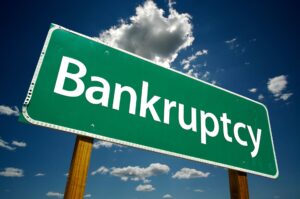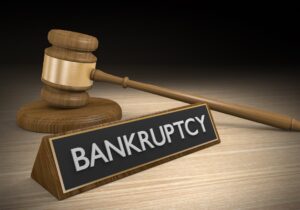Bankruptcy can often feel like a financial blizzard, merciless and all-encompassing. It’s an experience that pulls at the heartstrings and leaves one feeling emotionally drained. The decision to file for bankruptcy can, and does, substantially shake up your financial landscape. Anxiety about the future is an all-too-common companion during such times. Still, it’s important to remember that bankruptcy is not a cul-de-sac, but rather a crossroad leading towards a new beginning. Bankruptcy is not the end of the road; it’s the start of a journey toward a better, more stable financial future.
Even though bankruptcy can cast a long shadow on your credit score, it doesn’t imprison you in a cycle of unending credit unworthiness. With the right blend of patience, discipline, and strategy, you can absolutely rebuild your credit post-bankruptcy. This detailed guide offers a wealth of effective strategies, practical tips, and empathetic advice to help you navigate the road to financial recovery in Central New York and the North Country.
Bankruptcy: Understanding Its Footprint on Your Credit
In order to chart a course toward rebuilding your credit, it’s imperative to understand the imprint bankruptcy leaves on your credit score. Bankruptcy, once filed, is reported on the public records section of your credit report for a period of seven to ten years. The longevity of this footprint depends on the type of bankruptcy filed. Chapter 7 bankruptcy will stay on your credit report for ten years, whereas Chapter 13 bankruptcy will stay on for seven years.
While the fact that you filed bankruptcy will continue to show on your credit report for years, you will start to rebuild your credit within months after filing a bankruptcy. We will give you a detailed guide on how to rebuild your credit after the bankruptcy is filed.
Step 1: Charting Your Financial Course – Create a Budget
Your journey toward credit restoration begins with gaining control of your financial reins. And the first step towards doing so is by creating a realistic budget that reflects your income, expenditure, and debt repayment goals. Much like a trusted GPS, a well-structured budget guides you toward better money management. It enables you to track your spending habits, prioritize debt repayments, and ensure the timely fulfillment of your financial obligations.
Making sure that you make on time payments is the most important factor in rebuilding your credit. If you are late with payments, you will only be hurting your credit score and rebuilding.
Step 2: Building Trust with a Secured Credit Card
Acquiring a secured credit card could be one of the most valuable tools in your credit-rebuilding toolkit. A secured credit card operates a bit like a safety net, with a cash deposit serving as collateral that defines your credit limit. This collateralized deposit significantly reduces the risk for the credit card issuer, making it easier for individuals with a bankruptcy history to qualify.
When used responsibly and payments are made punctually, a secured credit card can effectively showcase your financial responsibility, helping to enhance your credit score over time. Choose a secured credit card issuer who reports to all three major credit bureaus to ensure your diligent payment habits positively impact your credit report.
Step 3: The Virtue of Timeliness – Make Prompt Payments
One of the most crucial aspects of rebuilding credit post-bankruptcy is the consistent and timely fulfillment of your financial obligations. Paying all your bills on time, whether they’re for secured credit cards, rent, utilities, or any other debts you may have, underscores your financial responsibility and helps to rebuild trust with lenders. Late or missed payments can be a significant speed bump on your road to credit restoration, so it’s essential to make your payments a top priority. Consider setting up automatic payments or establishing reminders to ensure you’re always ahead of the curve.
Step 4: Keep a Watchful Eye on Your Credit Report
Monitoring your credit report regularly is as vital as keeping an eye on the road while driving, especially in the aftermath of bankruptcy. Just like a rearview mirror, a regular review of your credit report allows you to spot any inaccuracies or discrepancies that could otherwise hinder your progress. Anomalies, such as accounts that were included in the bankruptcy but are still reported as active, can and should be disputed with the credit bureaus.
Remember, you are entitled to free annual credit reports from each of the three major credit bureaus. Consider subscribing to a credit monitoring service for continual updates and instant alerts on changes to your credit. This proactive approach ensures that your credit report accurately reflects your financial standing, thus steering you toward your desired destination more efficiently.
Step 5: Craft a Positive Payment History
Within months after the bankruptcy is filed, you will start rebuilding your credit. You will want to make sure that there are loans and/or credit cards that show up on your credit report and that they are reporting your current payment history. Consider starting with a small personal loan or a retail store credit card. Opt for accounts that have a higher approval rate for applicants with a recent bankruptcy, like secured loans or cards specifically designed for individuals in credit-rebuilding phases.
When utilizing these accounts, remember to keep your credit utilization low. Credit utilization is the difference between how much credit you have used versus how much you have available. Consistent, timely payments are your friend here, helping you weave a positive payment history over time. This narrative of reliability will reassure lenders of your capability to manage credit effectively.
Step 6: A Helping Hand – Seek Professional Guidance
Rebuilding credit after bankruptcy can be daunting, especially if you’re feeling overwhelmed or uncertain about the best path forward. Don’t fret; you’re not alone. Seeking professional guidance from a bankruptcy attorney can illuminate the path and help you maneuver through this complex process with confidence.
A Trusted Bankruptcy Attorney
At Grady BK, PLLC, we don’t just understand the hardships associated with bankruptcy and the importance of rebuilding credit, we empathize with them. As a trusted bankruptcy attorney, my practice is committed to helping clients rise from their financial struggles and find hope once again. I file Chapter 7 and Chapter 13 bankruptcies, which can offer you relief from harassing creditors, repossessions, garnishments, evictions, and foreclosure. My ultimate goal is to offer you a financial fresh start, empowering you to step forward unburdened.
If you’re in Central New York or the North Country and yearning for a fresh start, Grady BK, PLLC stands ready to offer the dedicated support and expertise you need during this challenging time. We approach each client with compassion and care, recognizing that financial matters are deeply personal and can be incredibly sensitive. We’re here to listen to your concerns, provide guidance, and work tirelessly to help you achieve a brighter financial future.
Don’t hesitate to reach out for a free consultation and a sympathetic ear at (315) 299-9005. Allow us to be your trusted partner on this journey to rebuilding your credit and regaining control of your financial well-being. Together, we can navigate the labyrinth of bankruptcy, formulate a strategy for credit rebuilding, and help you rekindle hope and confidence in a brighter financial future. Remember, you are not alone in this journey; Grady BK, PLLC, is here to be your faithful companion every step of the way.




